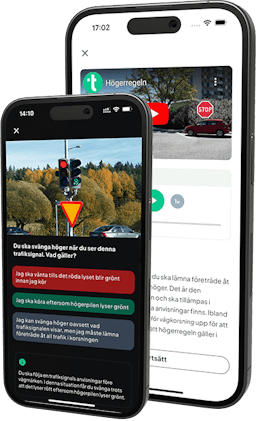Instruction signs indicate specific roads or zones such as a motorway (A) or a home zone (B). So as to let you know when a specific road or zone comes to an end, most instruction signs will have an end sign, such as motorway ends (C) or home zone ends (D).

Examples of common instruction signs
- Motorway (A)
- Motorway ends (B)
- Clearway (C)

- Clearway ends (A)
- Built-up area (B). The general speed limit in built-up areas is 50 km/h. The general speed limit applies only if there are no road signs indicating a different speed limit.
- Built-up area ends (C). The general speed limit outside of built-up areas is 70 km/h.

- Pedestrian zone (A). It is generally only permitted to cross streets in a pedestrian zone and not to drive along them.
- Pedestrian zone ends (B)
- Home zone (C). When driving in a home zone you have a duty to give way to pedestrians and you may only drive at walking speed. Walking speed is approximately 7 km/h.

- Bicycle street (A). Bicycle streets were introduced in 2020. When driving on a bicycle street, you have a duty to give way to vehicles on the bicycle street and you must adapt your speed to that of the bicycle traffic. The maximum permitted speed is 30 km/h.
- Bicycle street ends (B)
- Recommended lower speed limit (C). This road sign is used in zones or on roads where you are not recommended to exceed the speed shown.

- Recommended lower speed limit ends (A)
- Recommended maximum speed limits (B). This road sign is normally used during temporary circumstances such as roadworks and it is recommended that you do not exceed the speed limit indicated.
- Recommended maximum speed limit ends (C)

- Merging (A). This road sign tells you that two lanes or carriageways are going to merge into one. Whenever two lanes or carriageways merge into one, road users in both lanes must pay mutual consideration to one another; i.e. nobody has a specific duty to give way.
- One-way traffic (B). This road sign indicates the direction of a one-way street.
- No through road (C). The road you are entering leads to a dead end.

- Passing place (A). This road sign is used on narrower roads. It indicates a part of the road that has been widened to facilitate passing. Whichever vehicles arrives at the passing place first should stop and wait until the oncoming vehicle has passed.
- Parking (B). This road sign indicates that parking is allowed. If there is no supplementary plate with time indications then you can park for 24 hours on weekdays. On public holidays and the days before holidays there is free parking without any time limit.



